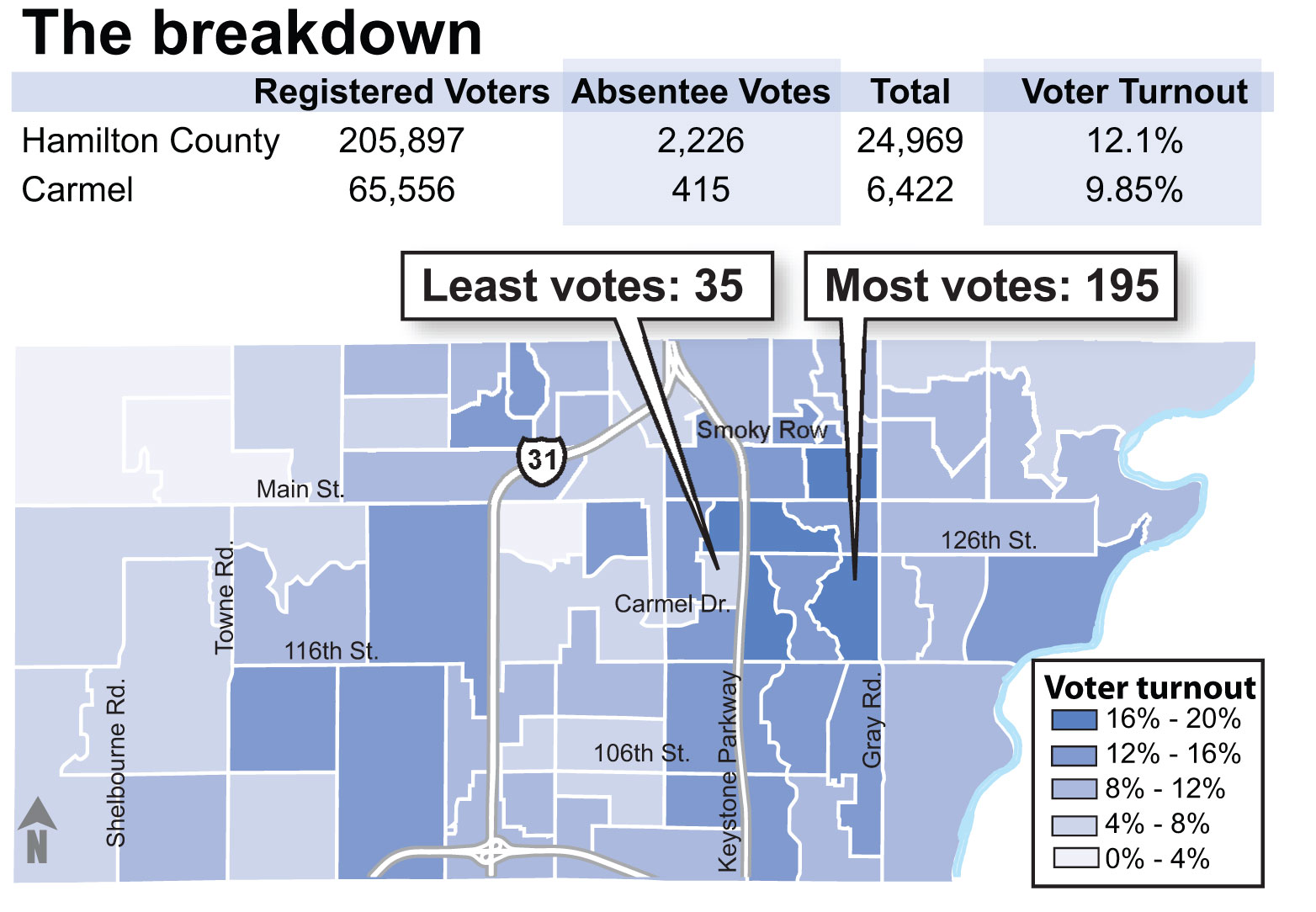
Staff report
A primary election in a non-presidential year is never the biggest draw to the polls but despite several contested state, county and local races – including historic races in Fishers – Hamilton County voters were unusually unengaged.
Hamilton County Election Administrator Kathy Richardson said Hamilton County has 205,897 registered voters and 24,969 ballots were cast in the primary – a voter turnout of 12.1 percent. Four years ago, the county had 46,585 of its 178,004 registered voters cast ballots for a turnout of 26.2 percent.
“We had more people than we had (four years ago). About 30,000 more registered voters,” she said. “We saw the turnout coming all along. We were behind in absentee ballots which I use as a measuring stick. I didn’t anticipate it being 12 percent.”

IUPUI political science professor Ramla Bandele said the low turnout isn’t surprising for an off-year primary.
“It’s ironic though, because that’s where we get our public servants from,” she said.
But there’s even less activity because political parties also tend to save their money to spend in general elections, she said.
But in Carmel – where the Republican primary often replaces the general election in terms of importance of outcome – 90 percent of voters likely saw no reason to alter their daily routines.
“There was no reason to come out,” Bandele said, noting that next year’s municipal election will likely have a larger draw because of the mayoral election.
She also pointed out that Carmel Republicans are mostly party voters who care more about national issues.
“The Tea Party can’t do anything up there,” she said.
Richardson said the county will solely pay for the election, which cost approximately $200,000 – or $8 a vote.
“There’s a lot of work and a lot of energy that goes into an election. A lot of races this time and that didn’t seem to matter either,” she said. “The local government is the government that affects them the most on a daily basis and you would think people might have an interest in that.”
Richardson said the Democratic Party has until June 30 to hold a caucus to fill any ballot vacancies from the primary and Independents have until July 1 to file for the general election. Voters could see similar names on the ballot as well.
“If they were beat for mayor, they can’t run for mayor but can for city council (under a different party),” Richardson said.
The fall’s general election will also include school board races that were not part of the primary election, as well as statewide races for auditor and treasurer.



